Walk into any pet store and you’ll immediately notice an astounding variety of treats available for dogs and cats. Not only are there whole aisles dedicated just to treats, it seems they are at every turn throughout the store – much like junk food displayed deliberately and strategically throughout a supermarket. The amount of pet store real estate devoted to treats highlights just how prominent their role is in pet ownership – and how important they are perceived to be for the human-animal bond.
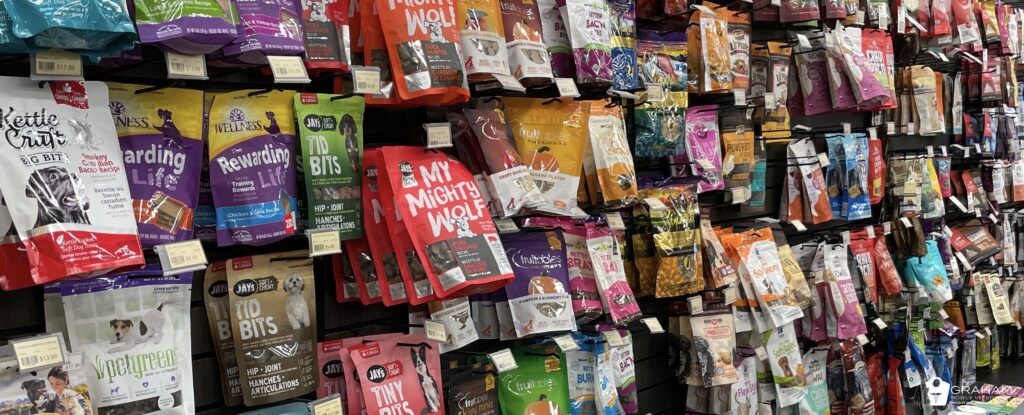
Treats may be used as a reward during training, a way to engage with a pet, or as a distraction to keep a pet occupied; however, in many cases treats are simply used as a show of love. The act of giving treats can easily become a habit on the part of the owner, just as the receiving of treats can become an expectation on the part of the pet, quickly becoming ingrained in the daily routine. It should therefore come as no surprise that the contribution of treats to the pet obesity epidemic, quite frankly, takes the biscuit.
The 10% Treat Allowance
A pet’s core diet must be nutritionally complete and balanced – containing all the key nutrients required to sustain life – for the animal to remain healthy; all other consumed products are considered treats. With that in mind, treats should make up no more than one tenth of the pet’s total daily caloric intake – in other words, your pet may have a 10% Treat Allowance.
Putting that concept into context, if a cat, small dog, and large dog respectively need 250, 500, and 1000 calories per day, their Treat Allowances are only 25, 50, and 100 calories apiece.
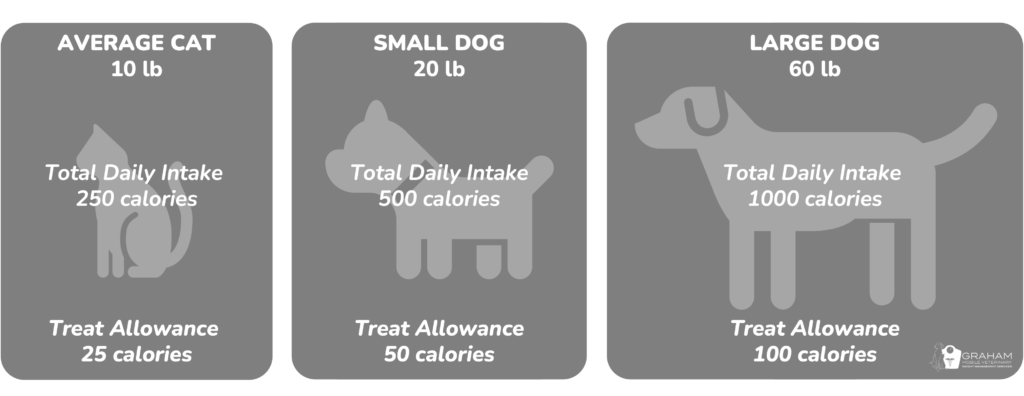
To give further perspective, compare these examples to the pet’s owner who needs 2000 calories a day. Respectively, the cat, small dog, and large dog each only require an eighth, a quarter, and half the number of calories compared to what their owner needs. A food item that might seem like no big deal to the owner – a half teaspoon of butter (17 calories), a plain Timbit (60 calories), a tablespoon of peanut butter (90 calories) – equates to a considerably more significant source of calories for the pet. In the context of the pet’s Treat Allowance, those little extras are suddenly not so trivial.
With this food for thought, let’s revisit the pet store treat aisle…
The Treat Trifecta
Besides of course being safe, any food item included in a pet’s diet should check these three boxes:
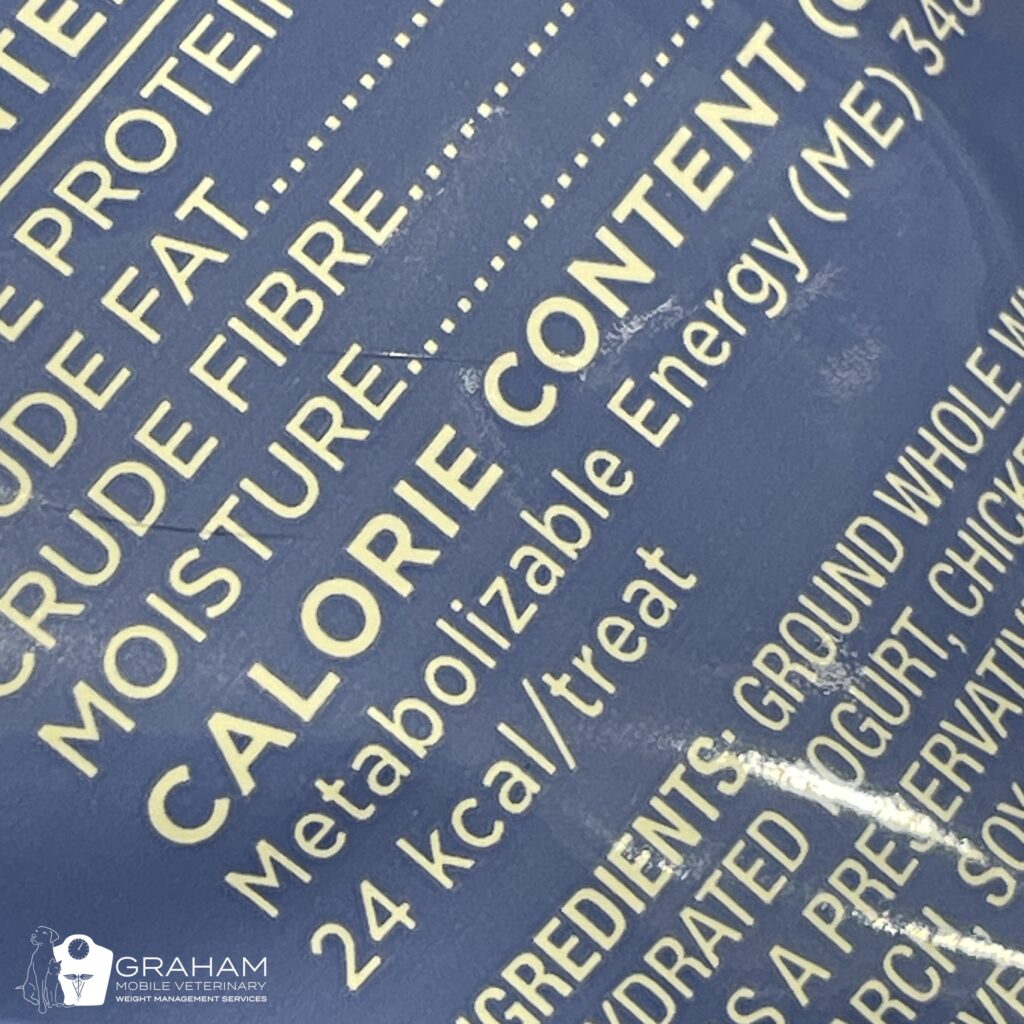
1. Caloric content must be…KNOWN.
Caloric data must be available on the product’s packaging or on the company’s website. Not only does a lack of nutritional data reflect poorly on a brand’s overall quality and trustworthiness if this information isn’t easily accessible it’s impossible to factor the food item into the pet’s daily intake.
Translation: If the treat’s calories aren’t listed, don’t buy it!
2. Caloric content must be…CONSISTENT.
Individual treats in a package should be consistent in size so the calories they provide can be accounted for accurately, allowing for an exact number of treats to be factored into the pet’s diet. If treats with variable size must be offered, accurate feeding amounts can only be determined by weighing the food item.
Translation: If the treat size isn’t cookie-cutter consistent, don’t buy it! (Or else go buy a digital kitchen scale as well!)
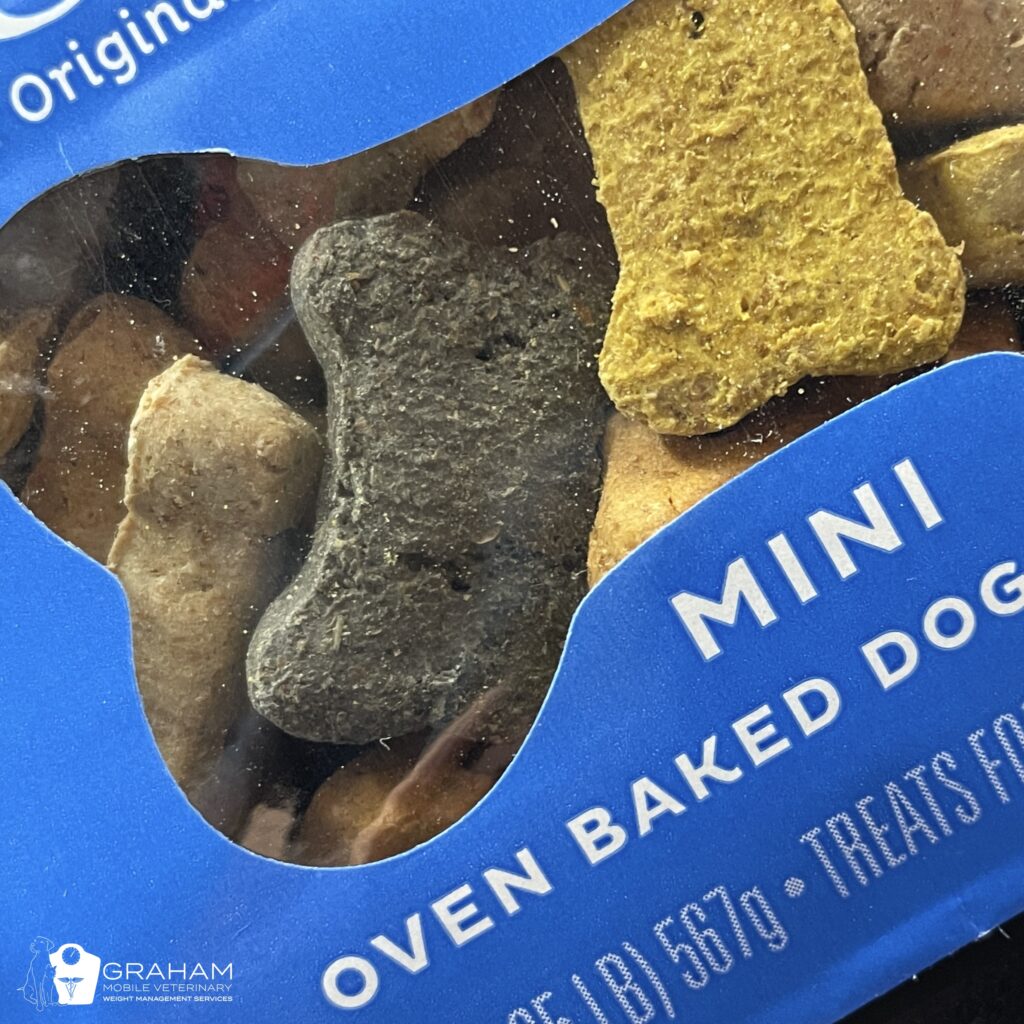
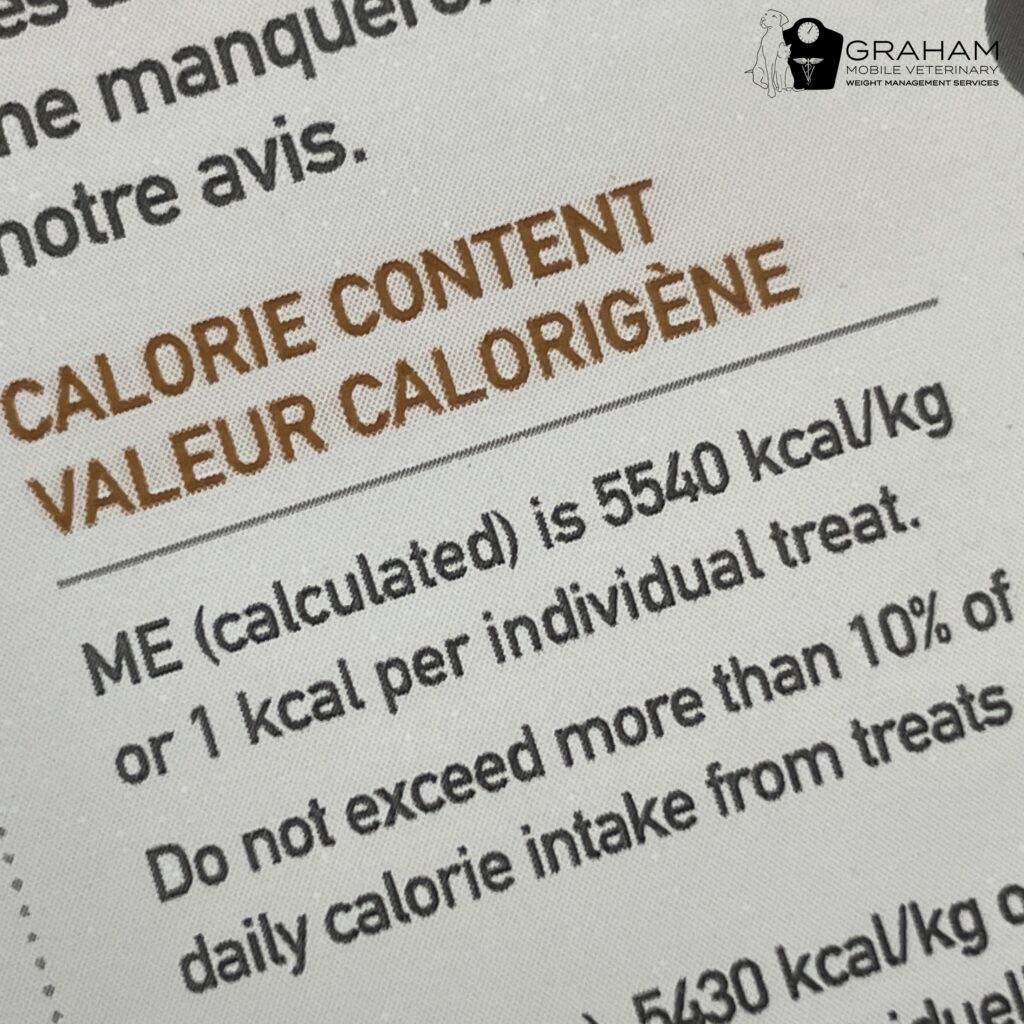
3. Caloric content must be…LOW.
The definition of “low-calorie” somewhat depends on the size of the pet. To keep it simple, the treat’s caloric content should be less than one tenth of the pet’s Treat Allowance – for example, a 2-calorie treat would be considered low-calorie for a cat while an 8-calorie treat is reasonable for a large breed dog.
Translation: If a treat takes up the entire Treat Allowance (or more), don’t buy it! (Or else seriously consider how important that treat is to your pet!)
There are many products on the market that easily satisfy these three criteria but there are also plenty of food items that fail miserably; moreover, many of them are sources of calories that are often completely overlooked. Check out how these popular food items fare:
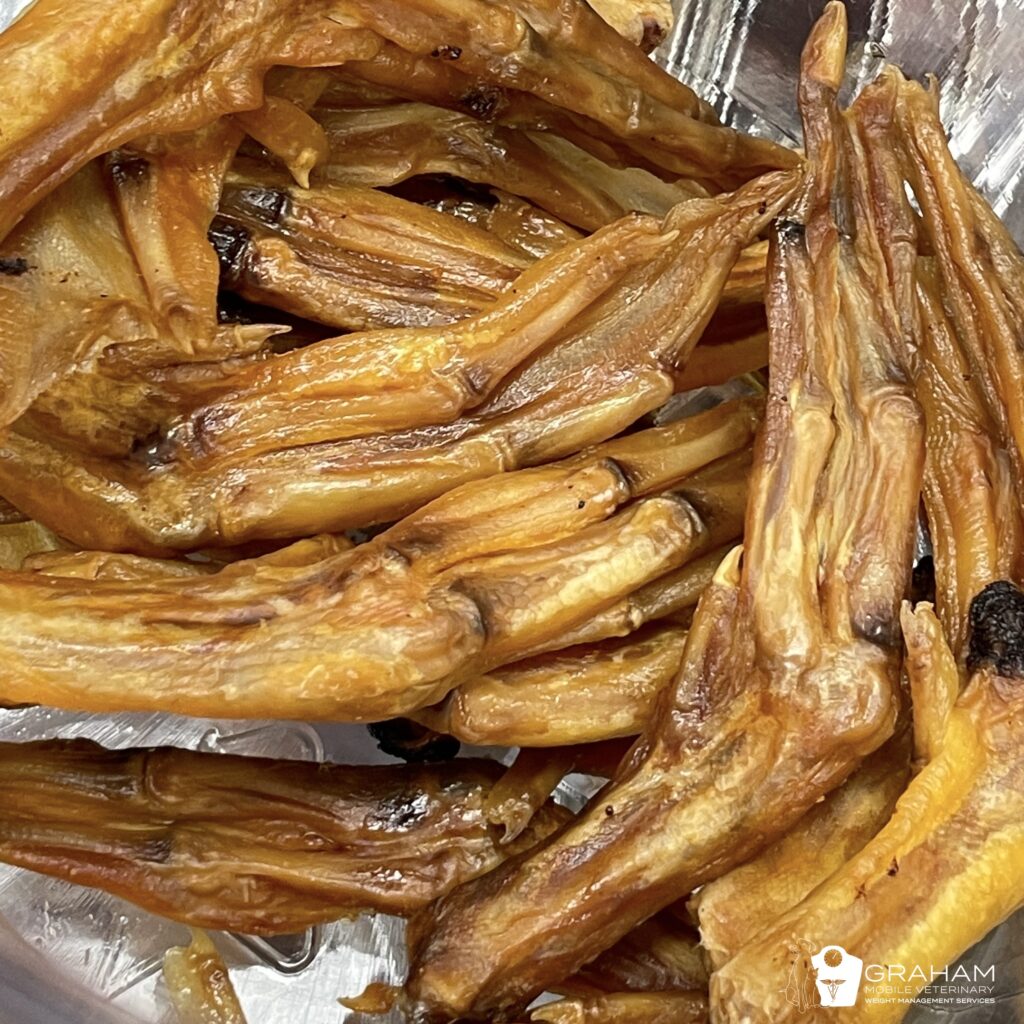
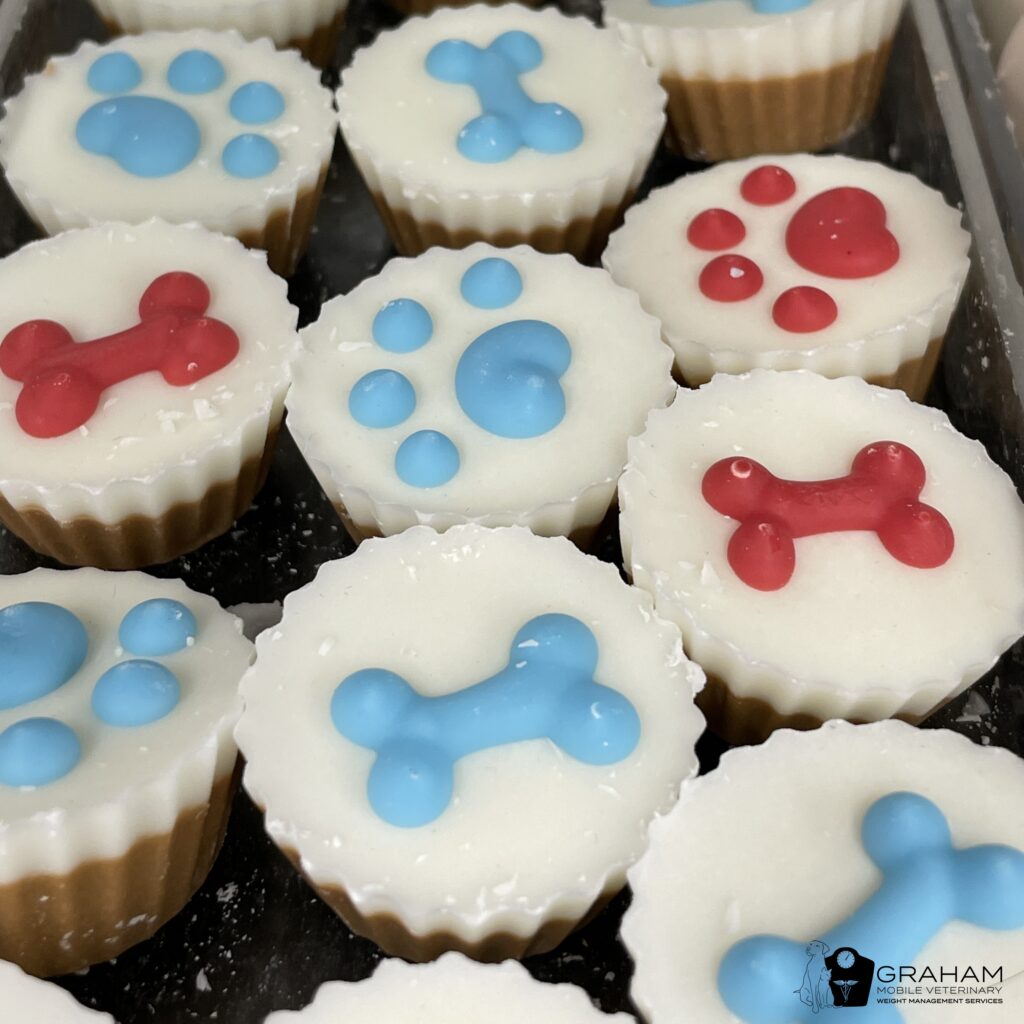
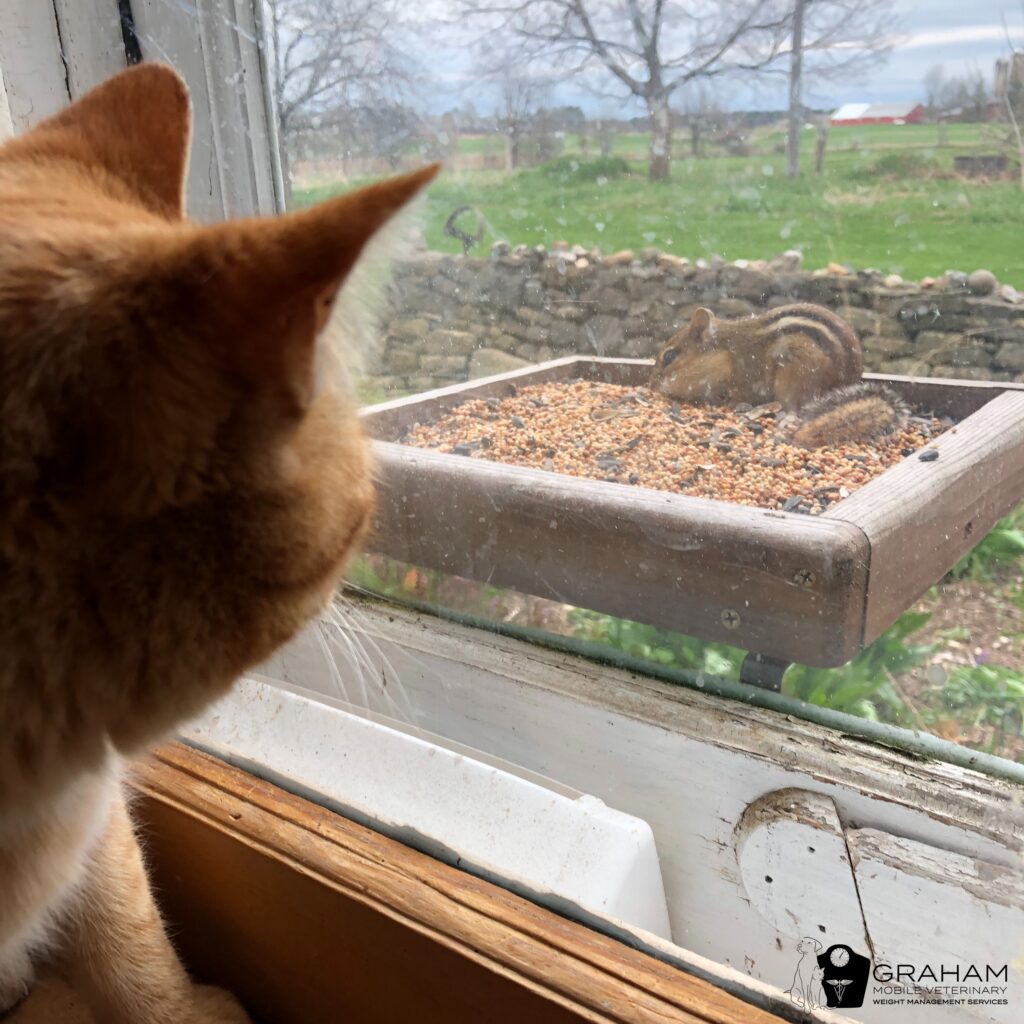
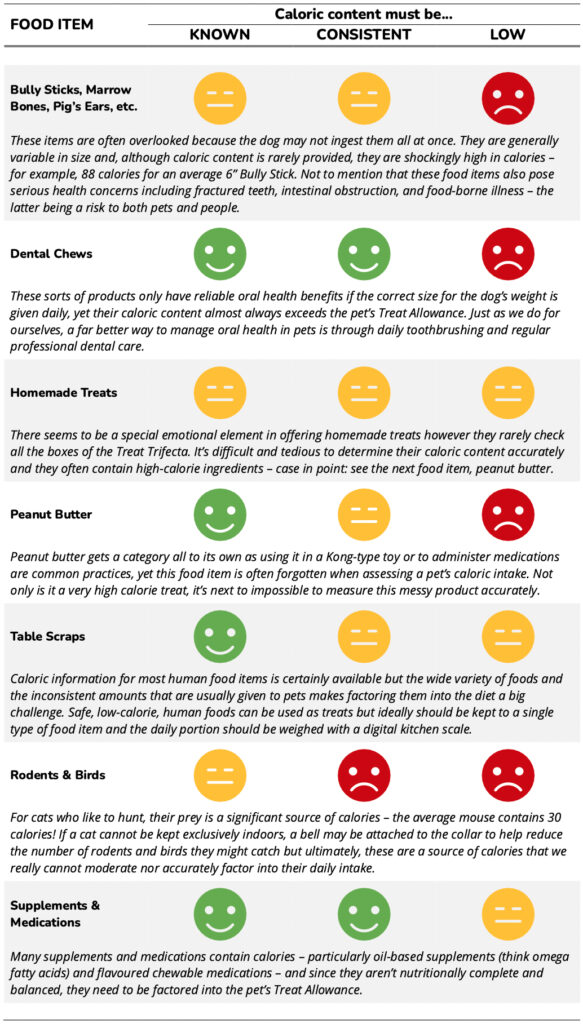
But it’s not all doom and gloom – thankfully those same pet store aisles are full of many excellent options that meet the criteria of the Treat Trifecta with smiley faces across the board!
Treat Them Right
When treats are already part of a pet’s – and owner’s – daily routine, eliminating them from the diet can be difficult and often unsuccessful. In most cases – and even in weight loss programs – it’s reasonable to allow treats provided they are carefully factored into the pet’s nutritional plan and the plan is adhered to diligently by all family members. Follow these three steps to treat your pet right:

1. Ask your veterinary team to assess your pet’s weight, body condition, and nutritional requirements. From this information they will determine your pet’s total daily caloric intake – minus 10% for your pet’s Treat Allowance – and provide you with precise feeding amounts of your pet’s core diet.
2. Next, using your pet’s Treat Allowance and applying the guidelines of the Treat Trifecta, work with your veterinary team to create a daily treat regimen that works best for your pet and satisfies your family’s needs.
3. Finally – and most importantly! – read the next blog in our Cookie Monsters series, The Icing on the Cake, to find out how to make the most of your pet’s Treat Allowance and spoil them rotten without spoiling their diet!
Graham Mobile Veterinary Weight Management Services offers tailored weight management programs for dogs and cats across Ontario. If you need further assistance with your pet’s nutritional plan, feel free to contact us directly!

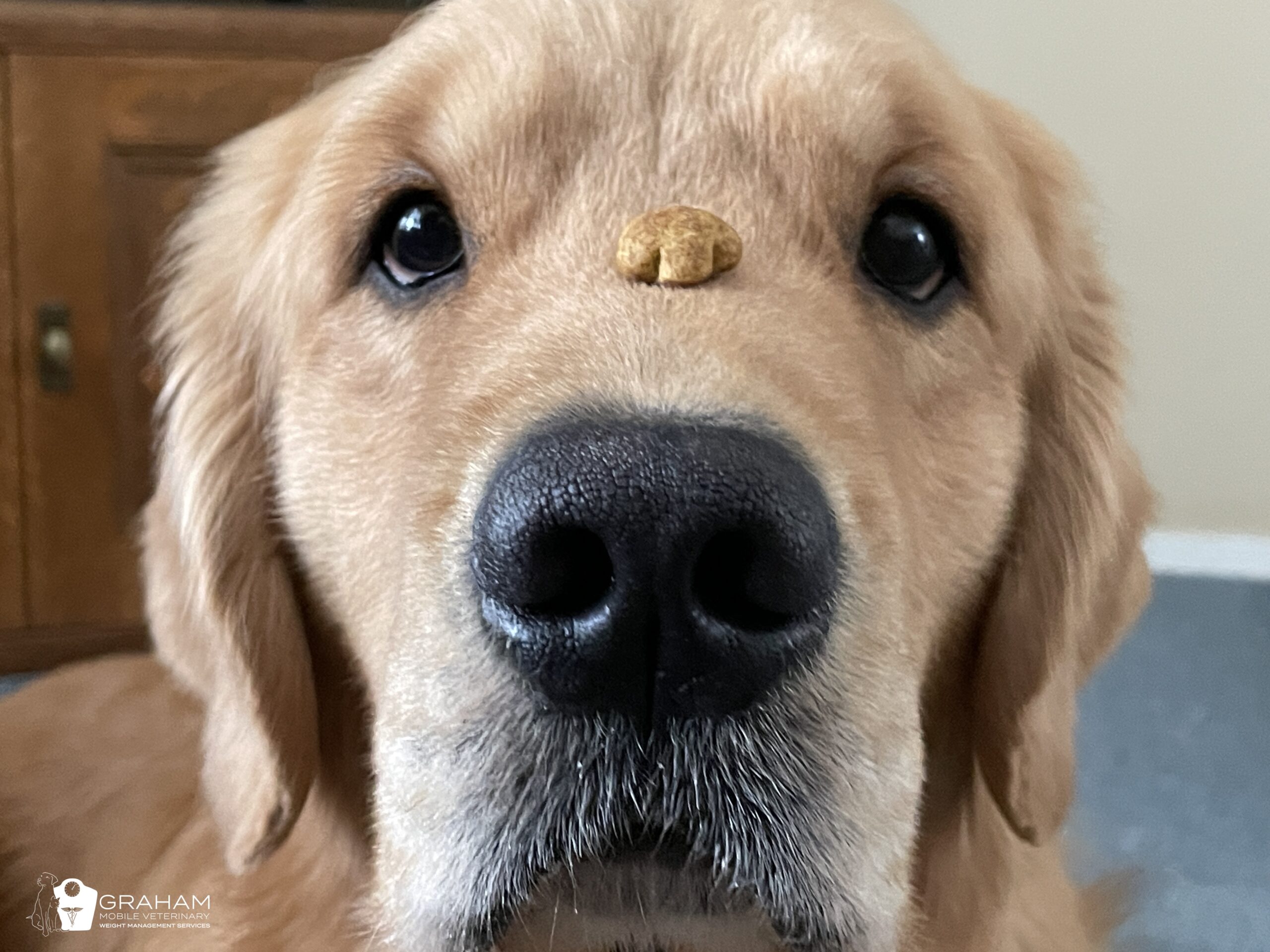
0 Comments